Tottenham has produced some fine young talents in recent years, either from their academy or by buying teenagers for brilliant deals.
The Mauricio Pochettino era saw the likes of Harry Kane, Dele Alli, and Harry Winks break into the first team and play an essential role during their stint with the club.
Going further back, this tradition seemed to have been there, with them producing gems in the form of Gareth Bale, who was sold later for a world-record fee.
Next on that list seems to be one of their own, Oliver Skipp.
Skipp was loaned to Norwich City for the 2020-21 season
because Spurs management felt the Championship experience would be the best for his development.This scout report will contain a tactical analysis ofhow he plays a vital role in Daniel Farke’s tactics.
Oliver Skipp Positioning On The Pitch
Daniel Farke’s style of play uses a 4-2-3-1 system, which was his preferred formation at Norwich City.
His system is peculiar in that he uses narrow wingers, and the width is mainly provided by the full-backs.
So, when the full-backs go forward, the defensive responsibility of protecting the centre-backs falls on the defensive midfielders in the double pivot.
Skipp starts as Norwich’s right-sided defensive midfielder, as shown in his action map for the current season.
He has started at the RDMF position in 65% of the matches and 15% at the slightly advanced RCMF position.
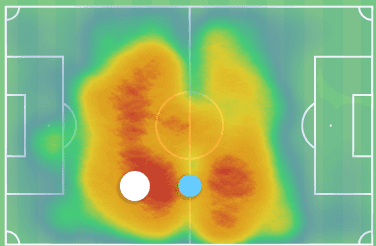
Occasionally, during matches or in some situations, he has also played as a left-sided pivot.
But this has been very rare, and Farke has consistently deployed him on the right side.
This is to provide him with the natural angles to play the ball out to when Norwich decides to build out from the back.
Oliver Skipp’s Defensive abilities
The primary job of a defensive midfielder in any system is to provide some protection to the back-4.
Skipp does the same in this system, where he sits in front of the back-4 and shields them.
His defensive statistics read 7.98 successful defensive actions per game, 6.34 defensive duels per game with an accuracy of 55.09%, 6.47 interceptions per game (possession adjusted) and contests 4.49 aerial duels while winning roughly 49.6% of them.
The numbers show that he is an active defender and pretty good at it.
Further analyzing him through an eye test gives us information on how valuable he is to Norwich’s defensive side.
His main job is to protect the right half-space in the Norwich half.
This means that he is more concerned about protecting the zone around him and not marking any player.
Only if a player enters his zone he engages with him and looks to recover the ball.
We can see an example of this in the image below.
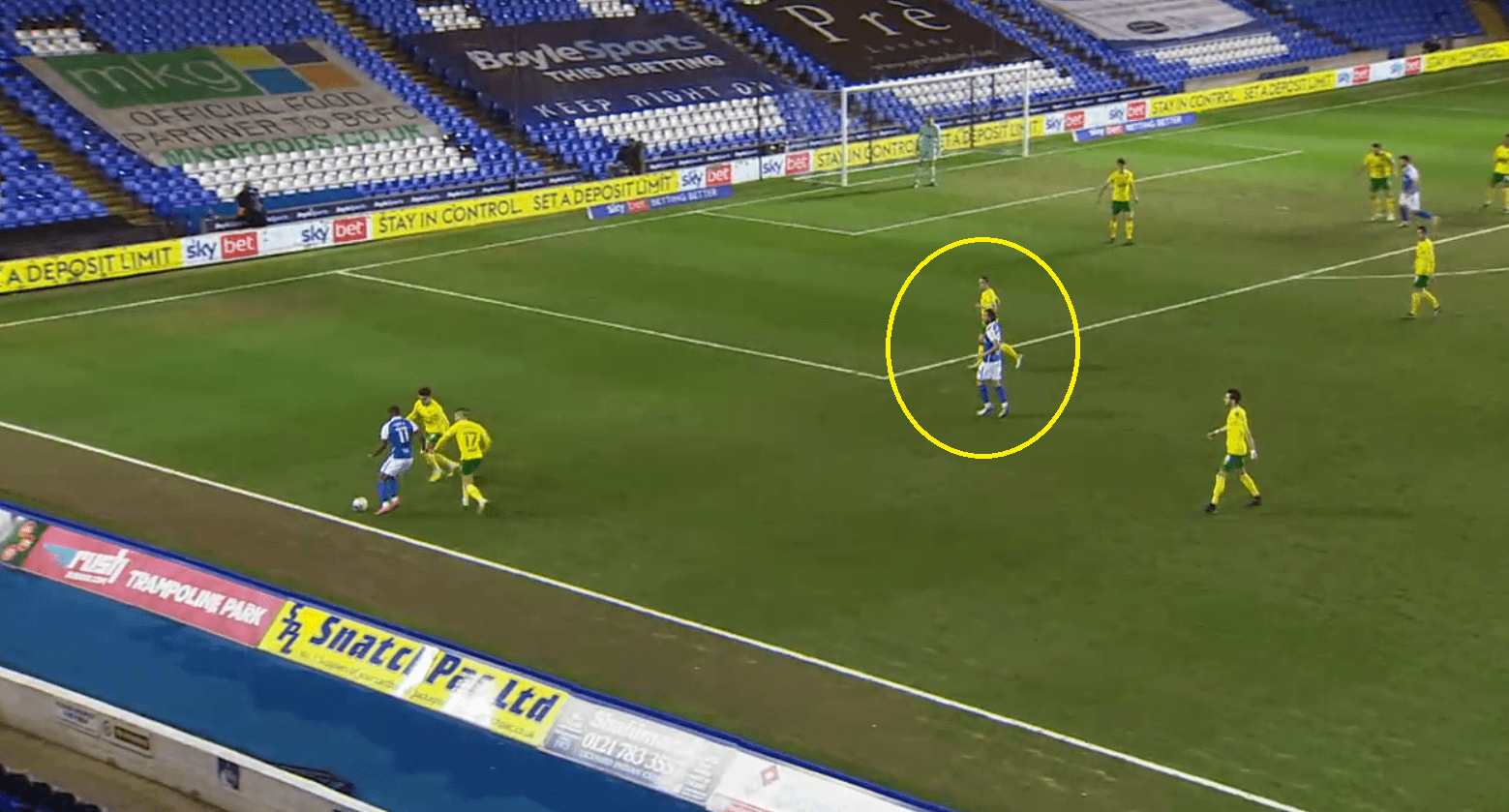
This particular role of protecting the zone requires excellent awareness and decision-making.
Those are some of the attributes that midfielders only gain with experience, but Skipp has already acquired them at a very young age.
In the example below, we can see him aware of a player looking to underlap behind, and he immediately points to one of his teammates to track him. He is giving an additional layer of protection to Max Aarons, who has engaged in a duel with a Birmingham City winger.
This is an essential quality for a player that cannot be explained by a statistic but is very much valuable.
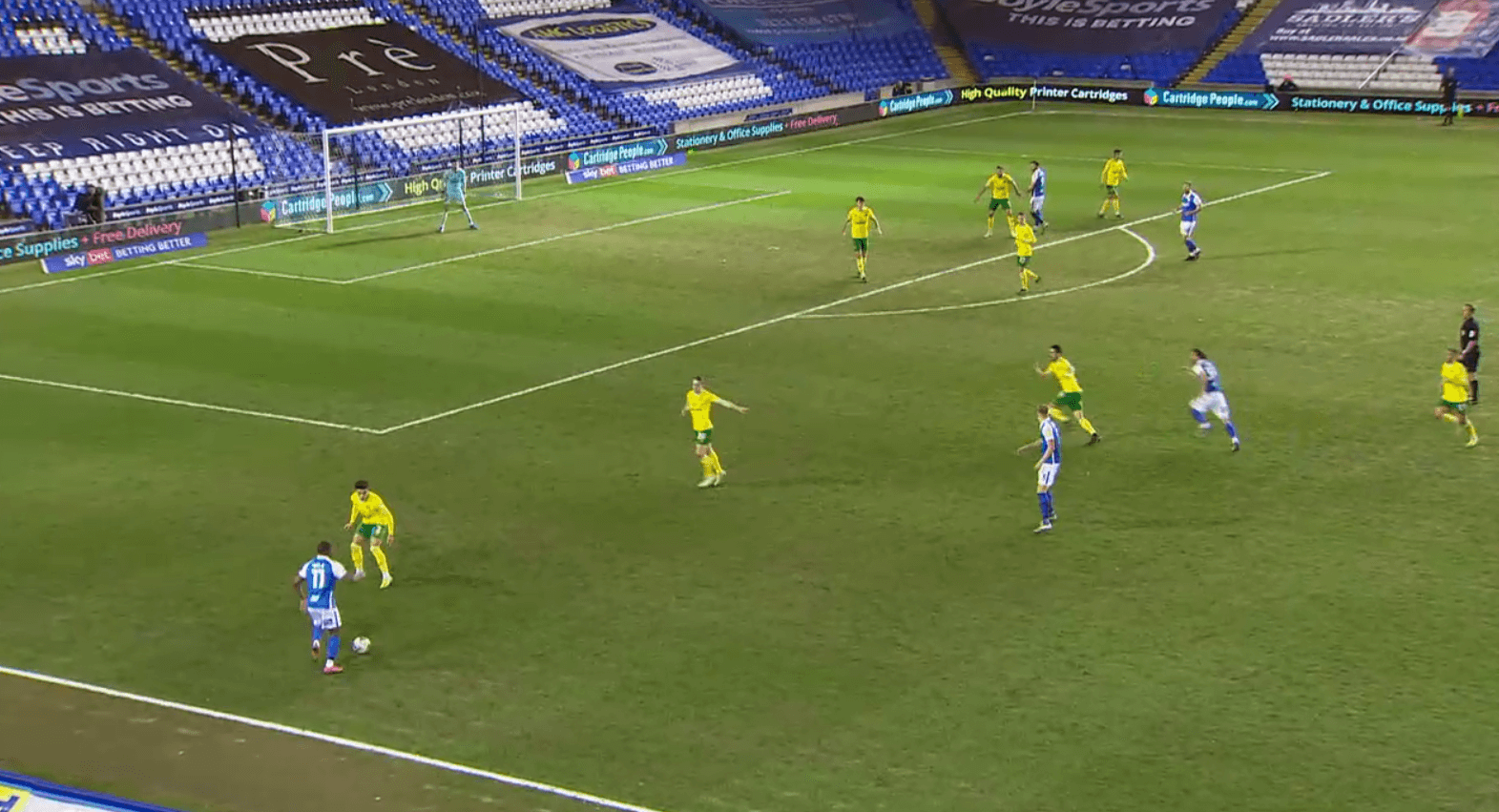
The role of a defensive midfielder is often misunderstood in the footballing world.
Most expect the midfielders to tackle the player with the ball, win duels, or press them high and perform slide tackles on them.
Though these attributes can be expected from them, their primary objective is to stop the flow of the ball into the final third.
Instead of engaging in duels immediately that force a player to leave his zone, a player can adjust his positioning a little bit so that he can cover his zone while also blocking the passing lane to an opponent.
This requires minimal effort and energy, with just an additional awareness of the surroundings.
Skipp prioritizes the latter and maintains his position and cover shadow exceptionally well in a lot of situations.
That can be seen in the below image, where he scans and finds an opponent right behind him.
He immediately adjusts his position to block the lane using his cover shadow.
He knows that leaving a stable zone (one he is currently present) to an unstable one (one he might not have complete control over) is highly riskier, and if he fails to get to the player quickly, the opponent can access the player right behind him in a perfect area with a small one-two while he is left in no man’s land.
Also, had he not closed the lane by not moving across that would make his occupation of the current zone futile.
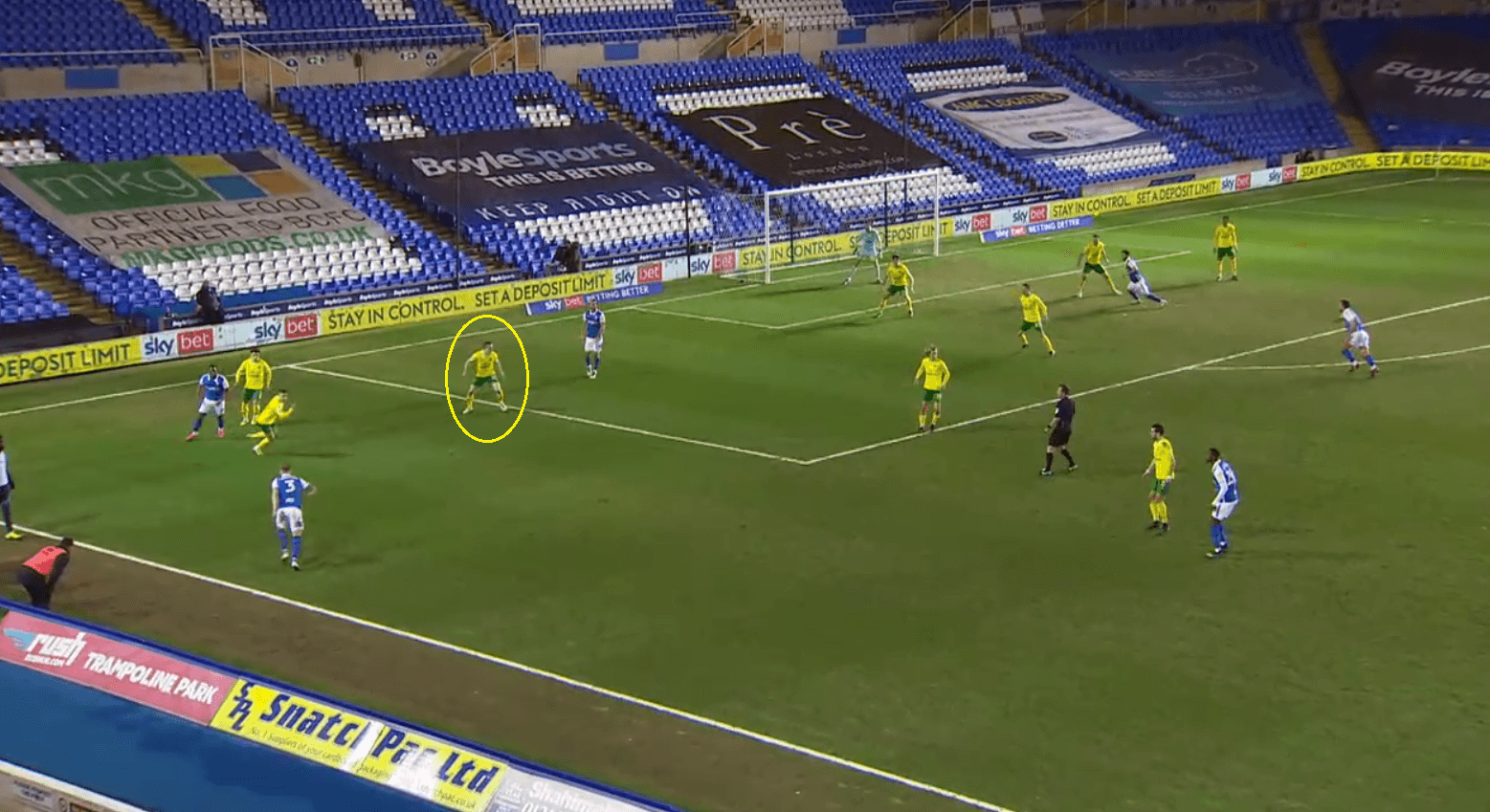
Looking at his on-the-ball defensive capability, he shows a very good ability to retrieve the ball back from the opponent and performs decently in duels.
The graph below shows the U-23 midfielders in the Championship, plotted based on their defensive actions.
Skipp seems to be better than an average youngster in interceptions as well as sliding tackles.
The metrics are possession-adjusted because Norwich is among the most dominant teams in the league in this area.
This reduces their players’ frequency of performing such actions.
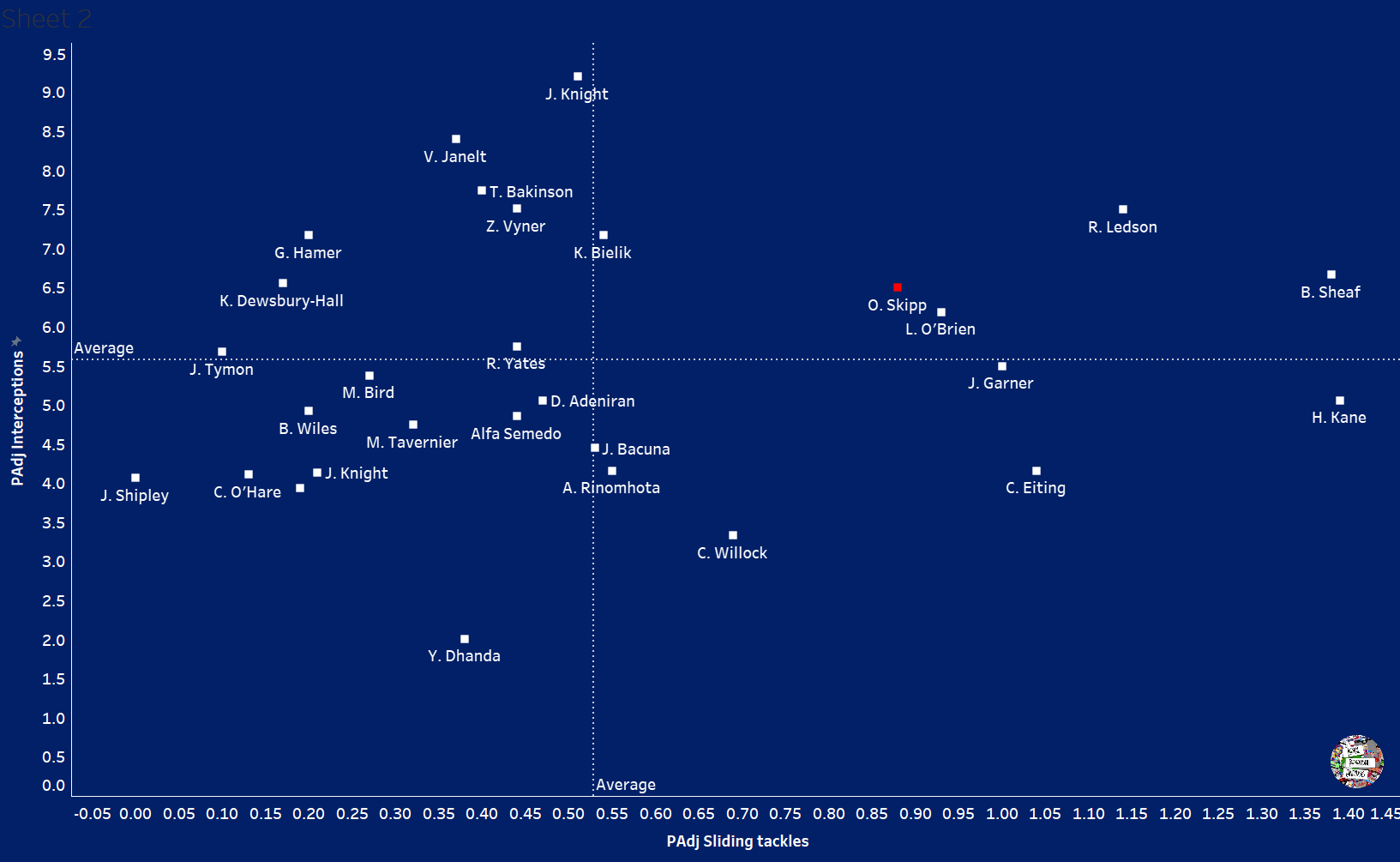
An example of him tackling the opponent is given below.
Initially, Skipp makes the right decision by staying in his zone.
He anticipates the player who has received the ball to enter his zone.
This gives him the time to adjust his posture and improve his balance before he attempts to win the ball back.
He makes the challenge at the right time and wins the ball back.
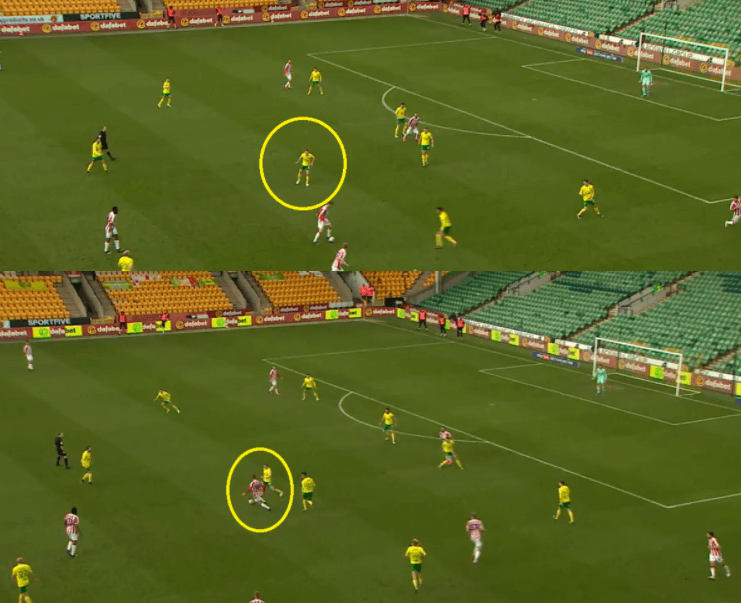
In another example, we can see his decision-making ability in terms of identifying the right time to make a challenge.
This particular challenge was especially during a transition where Norwich had just lost the ball.
When the Coventry City player has the ball, he initially retreats a yard back to read his movement while having an optimal body position (facing the winger at a 45-degree angle).
When the winger cuts inside and changes direction, Skipp identifies the right moment to intervene because the winger might have reduced momentum during such action.
This enables Skipp to get the ball back again from the opponent.
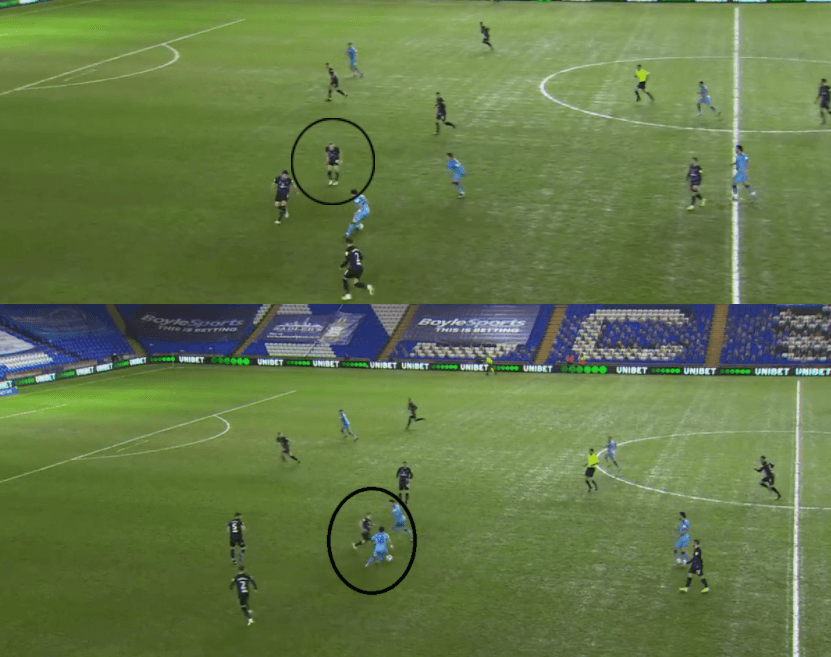
Standing at 175 cm, he is not expected to win many aerial duels but still does decently for a young midfielder, winning at an above-average league rate.
The graph below highlights that while also showing he falls below the league average in winning defensive duels.
Despite making astute decisions in many situations, Skipp, like some players in his age group, is also prone to poor decision-making at times.
He can be highly over-aggressive during some duels, which makes him lose at times.
He attempts a massive
number of defensive actions, and for such a large sample, this efficiency (55%) could be tolerated, but if he needs to go to the next level, especially startingweek in and week out in the Premier League, he needs to iron out these small changes.
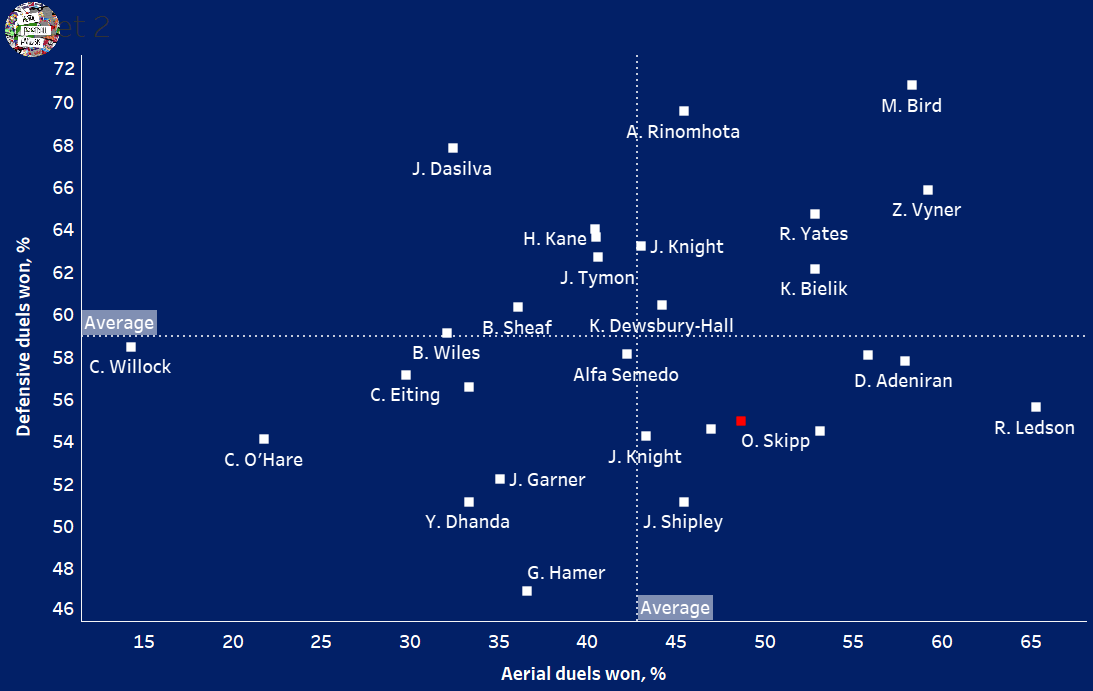
In the example below, Norwich has lost possession of the ball, and Skipp, being the right-sided midfielder, is already away from his position.
Instead of dropping into his position, he tries to duel with the Birmingham City player.
Due to such close proximity, he cannot win the duel with an unusual body posture.
Additionally, the player passes the ball to his teammate, who takes a shot from the position where Skipp should have dropped.
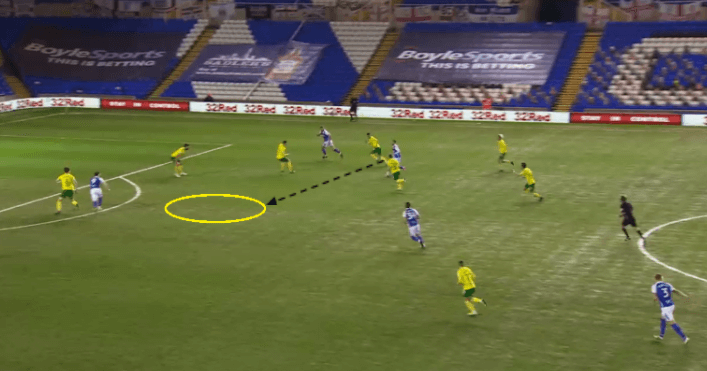
In another example below, we can see him again not staying in his zone or close to the player in his zone.
When the ball is played to that opposite player, Skipp needs to make a recovery run to the back of his player.
Though he does well in recovering the ball, he shouldn’t have put himself in that position in the first place.
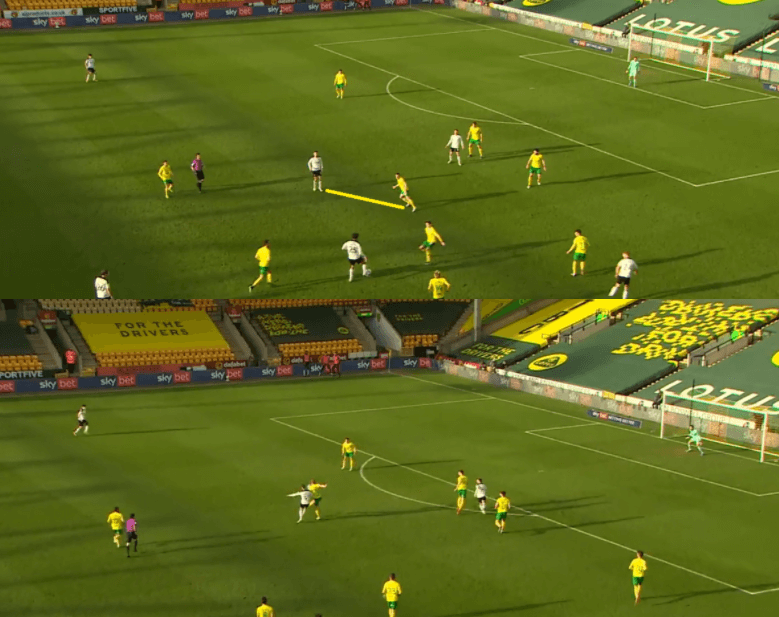
Oliver Skipp’s Role During Possession Phases
As a defensive midfielder, Skipp’s initial role in possession is to help his backline by building out from the back.
Mostly, Norwich looks to build out from the back, depending on their opponent’s front line.
If the opponent presses with a single forward, then the two centre-backs are enough to create a superiority against him, and Skipp plays slightly higher.
We can see that in the example below, where Skipp moves higher since the opposition is using only one forward to press the centre-backs and an additional body is not needed to maintain an existing superiority.
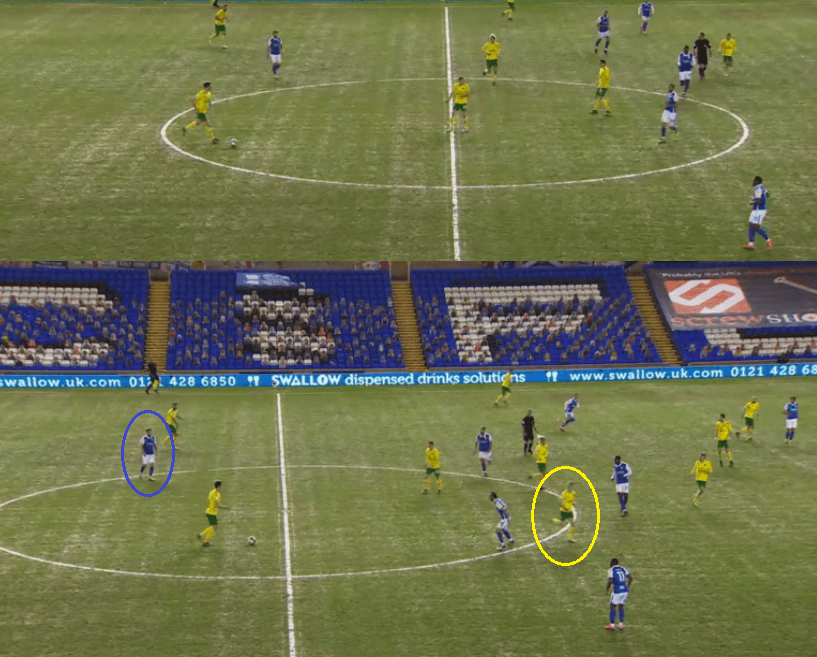
Whereas in cases when they press with two forwards, Skipp would be the midfielder to drop among the two in the pivot to create a 3v2 overload. It can either be between the two centre-backs or as a right-sided third centre-back.
An example of that can be seen in the image below. The opposition now presses with a two-man front line, so Skipp is needed for an additional presence to ensure superiority.
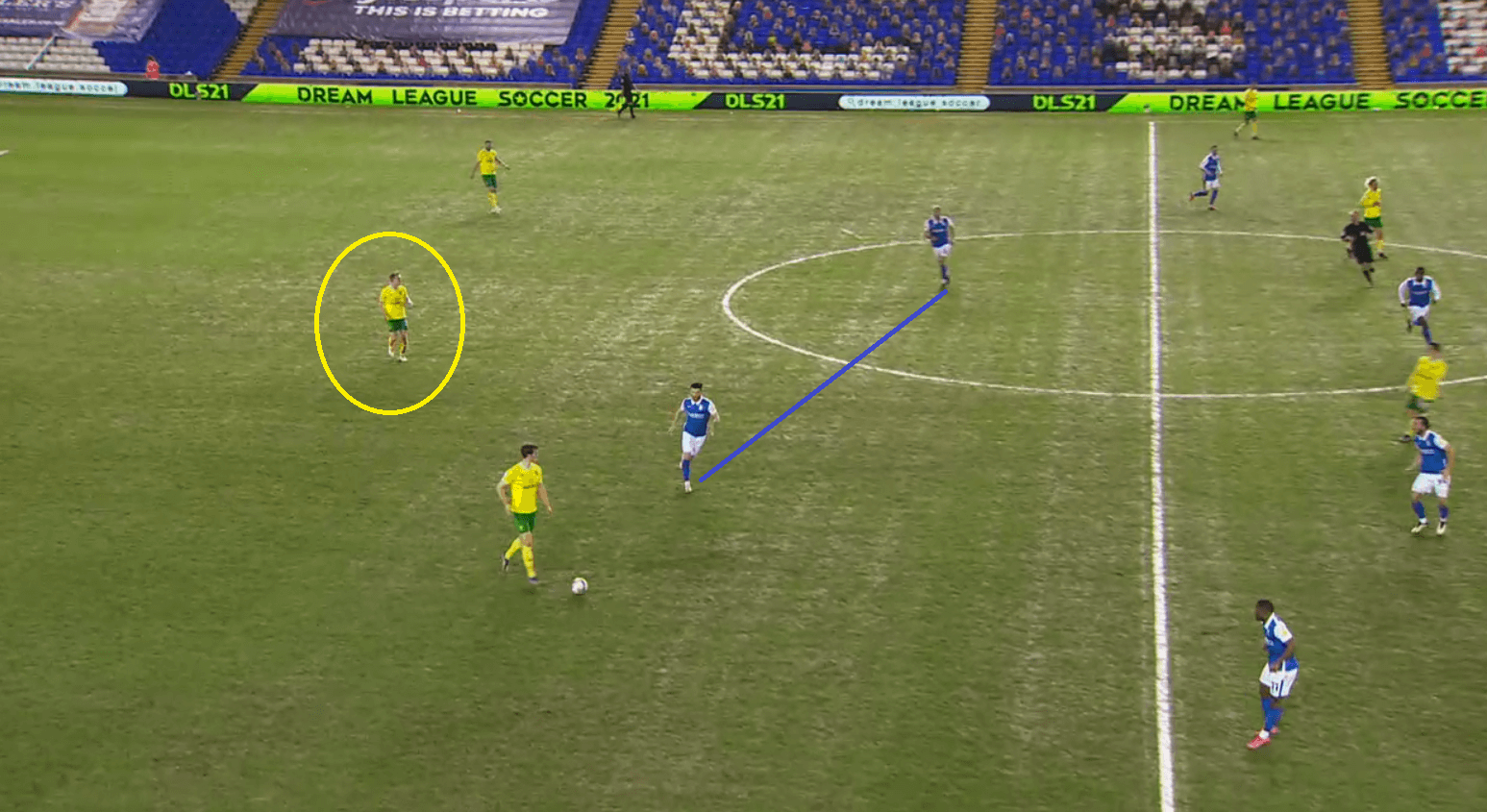
One of Skipp’s other vital qualities is his ability to scan the surroundings before he makes his next move.
This particular action can be seen in most of the top midfielders in the world, as they always look to spaces, players, or the ball to get a clear idea of what feasible action can be taken.
We have discussed his excellent defensive awareness during the defensive phase.
This, too, comes with his ability to scan his surroundings to anticipate what spaces the opposition might attack.
Even during possession, the ability to scan spaces plays a huge role, but it also helps the player ask for a ball when he notices that no one is looking to press him.
In the image below, Skipp is scanning the field for potential passing options and notices that no player is about to press him.
He comes into space and requests his teammate for the ball to be played to him.
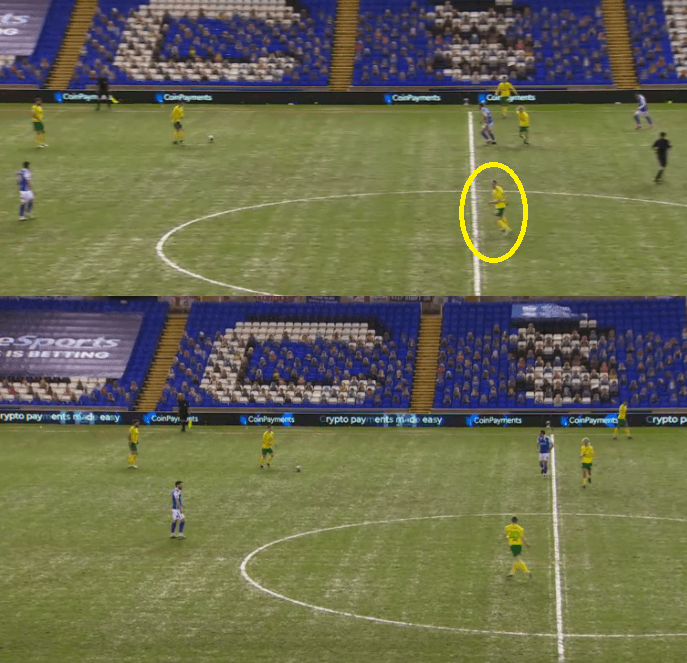
The plot below compares him with the other midfielders in the league based on his passing and creative abilities.
From the plot, we can see he is a high-volume passer who attempts a good share of his team’s total passes per match.
As a defensive midfielder, their primary job is to move the ball to the final third.
He averages 6.72 passes into the final third every game, which is an outstanding volume and it is way above the league average.
The accuracy is also pretty impressive, standing at 75.6%.
His passes into the penalty area are low, which means he is not much involved in the final phase, and players like Emi Buendia and Cantwell are given the responsibility to do it.
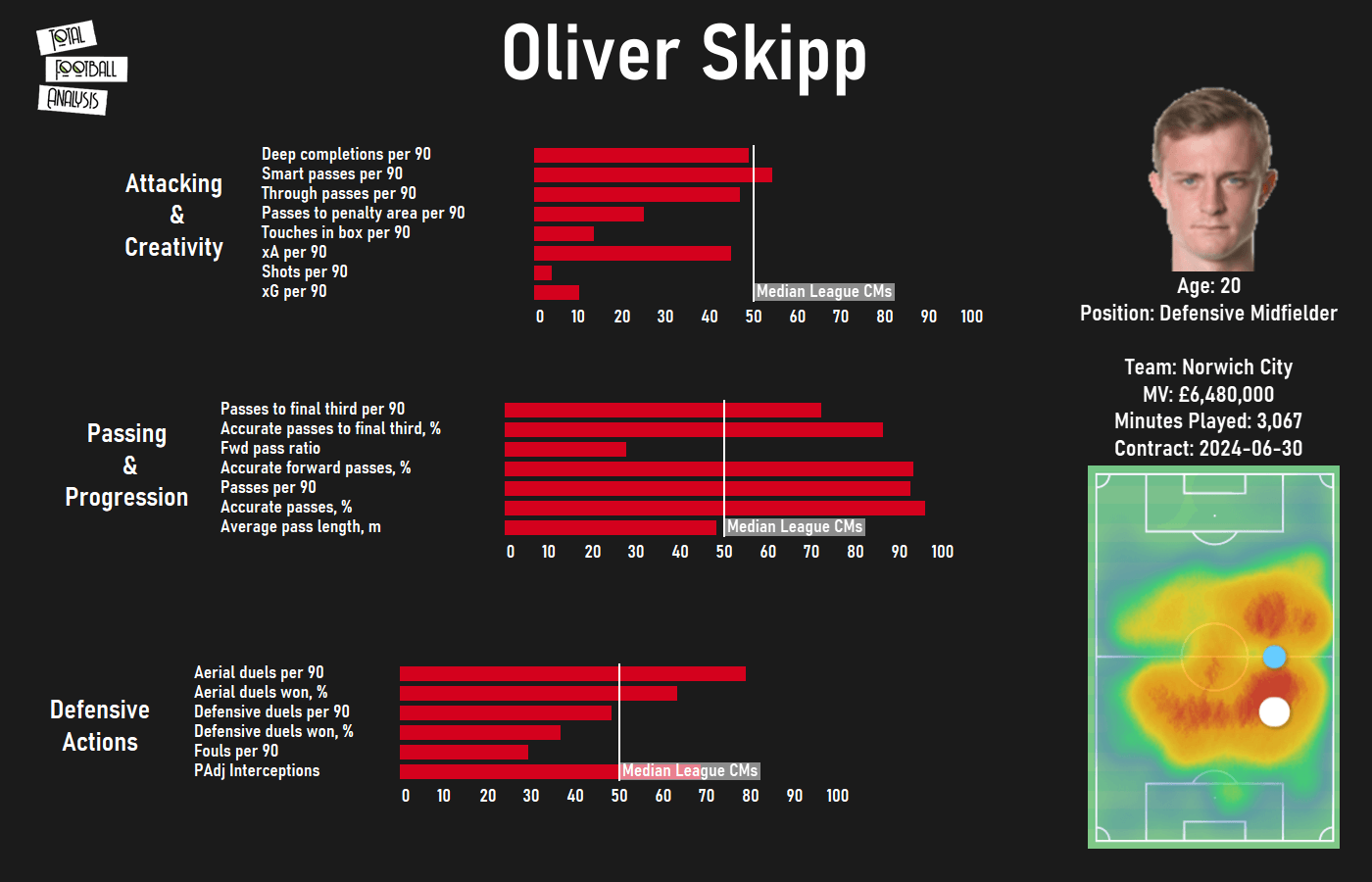
Another insight from the above graphic is that he has a very low forward pass ratio.
His average pass length is also somewhere around the league average.
This means that most of his passes are either sideways or backward.
This particular information tells us that he is much more of a ball retainer and looks to keep the possession secure.
The left part of the image below shows the regions where he receives most of the passes (yellow areas are higher, violet areas are lower), while the right shows the end location of his passes.
He has received most of his passes in the right-half space while some of them centrally.
Most of his passes have ended up on the right wing (closest flank), especially to the full-back on that side.
This tells us that his role under possession is much more about security and retaining the ball in the middle third.

Even though he is mostly reserved in possession, he is capable of being progressive on the ball.
He attempts 7.41 progressive passes per game but has completed 73.47% of them, which is an excellent accuracy.
An example of him switching the ball to the opposite flank to find Max Aarons is given below.
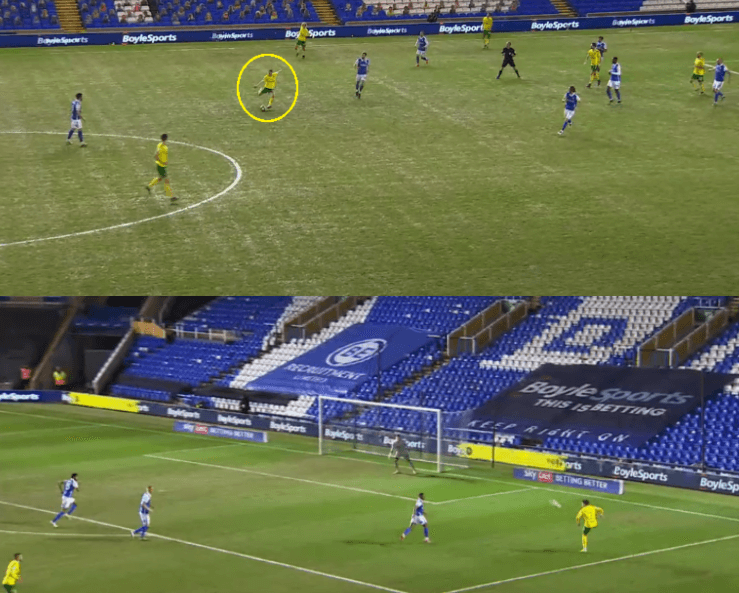
Technically, he is very good with his first touch and weight of pass.
This holds good even with his weaker foot.
Though he doesn’t use his weaker foot very often, he does seem to be comfortable in situations where he has to use it.
One example of this is we can find him in the flank and he plays a brilliant cut-back to one of his teammates for a shot assist.
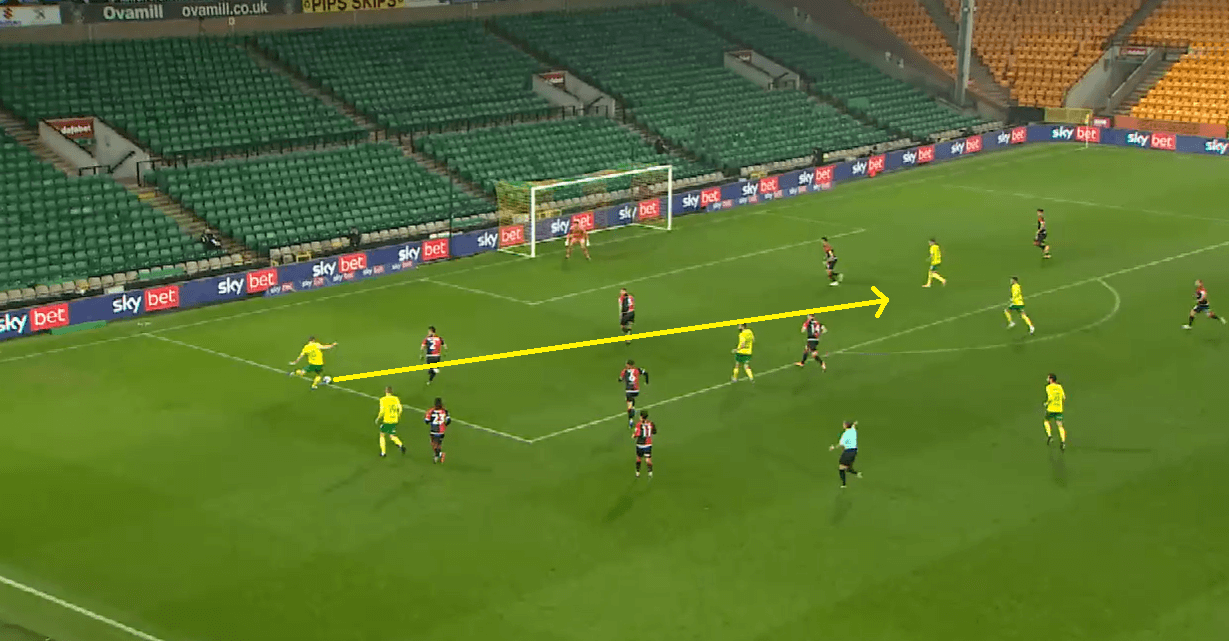
Even during possession, there are some small things that he needs to furnish before proceeding to the next level.
If not the best at press resistance, Skipp is pretty much decent in that aspect and does well to evade pressures.
But at times, he chooses the wrong instances to skip past the opposition where he should have passed.
This decision-making ability will eventually come up with the experience and for that, he needs a consistent run of games against some top-flight teams.
Oliver Skipp’s Potential Role at Spurs
At Spurs, we can expect him to slot into the right-sided defensive midfield position straightly.
During the first half of the season, Mourinho played Hojbjerg on the left side and Sissoko or Winks on the right.
But since both Sissoko and Winks aren’t too comfortable in possession, Hojbjerg was entirely responsible for progressing the ball.
This has dramatically helped the opposition press Spurs and restrict them from creating dangers. Mourinho had to drop Ndombele to a deeper role than his usual number 10 role to help Hojbjerg.
With Lo Celso and Kane absent (for a brief spell), Spurs missed Ndombele’s presence higher up the pitch to create opportunities.
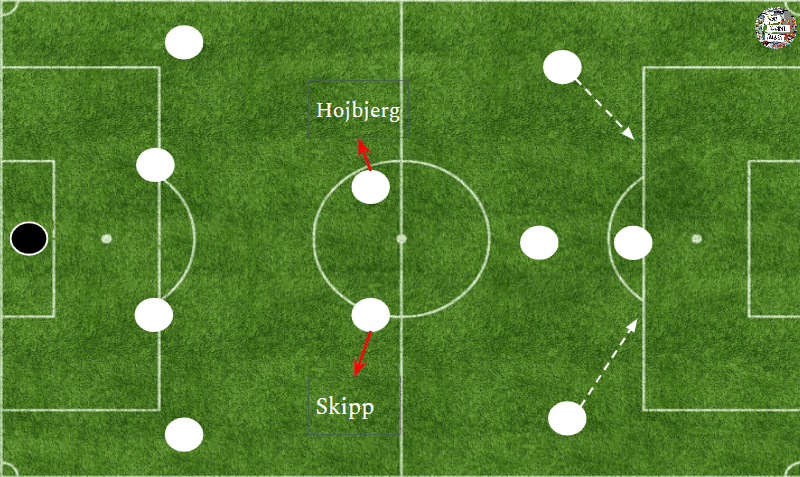
If this crisis arrives next season, Skipp can easily solve it.
He can partner with Hojbjerg as a right-sided CDM, a role he currently does for Norwich, while Hojbjerg can continue on the left.
Skipp’s presence will considerably reduce Hojbjerg’s responsibility, as Skipp is much more superior on the ball than Winks or Sissoko.
Also, if Mourinho thinks Skipp cannot start straight away, he can deputize him to Hojbjerg to reduce the latter’s workload.
Overall, the addition of Skipp to Mourinho’s plans next season will be a massive victory for the team.
His talent could be critical in allowing Mourinho and the board to address issues concerning other departments in the transfer market.
Conclusion
Spurs fans have already been buzzing about Skipp, the 20-year-old who has put in an impressive shift for the Championship contenders this season.
Norwich would be keen to extend his loan if they get promoted to the top flight next season, while the decision lies with Spurs, who, at this instance, would be tempted to take him back.
This scout report discussed the reasons why both clubs have highly rated him.
With such progressive development, Skipp is undoubtedly on the right track to having a great career.

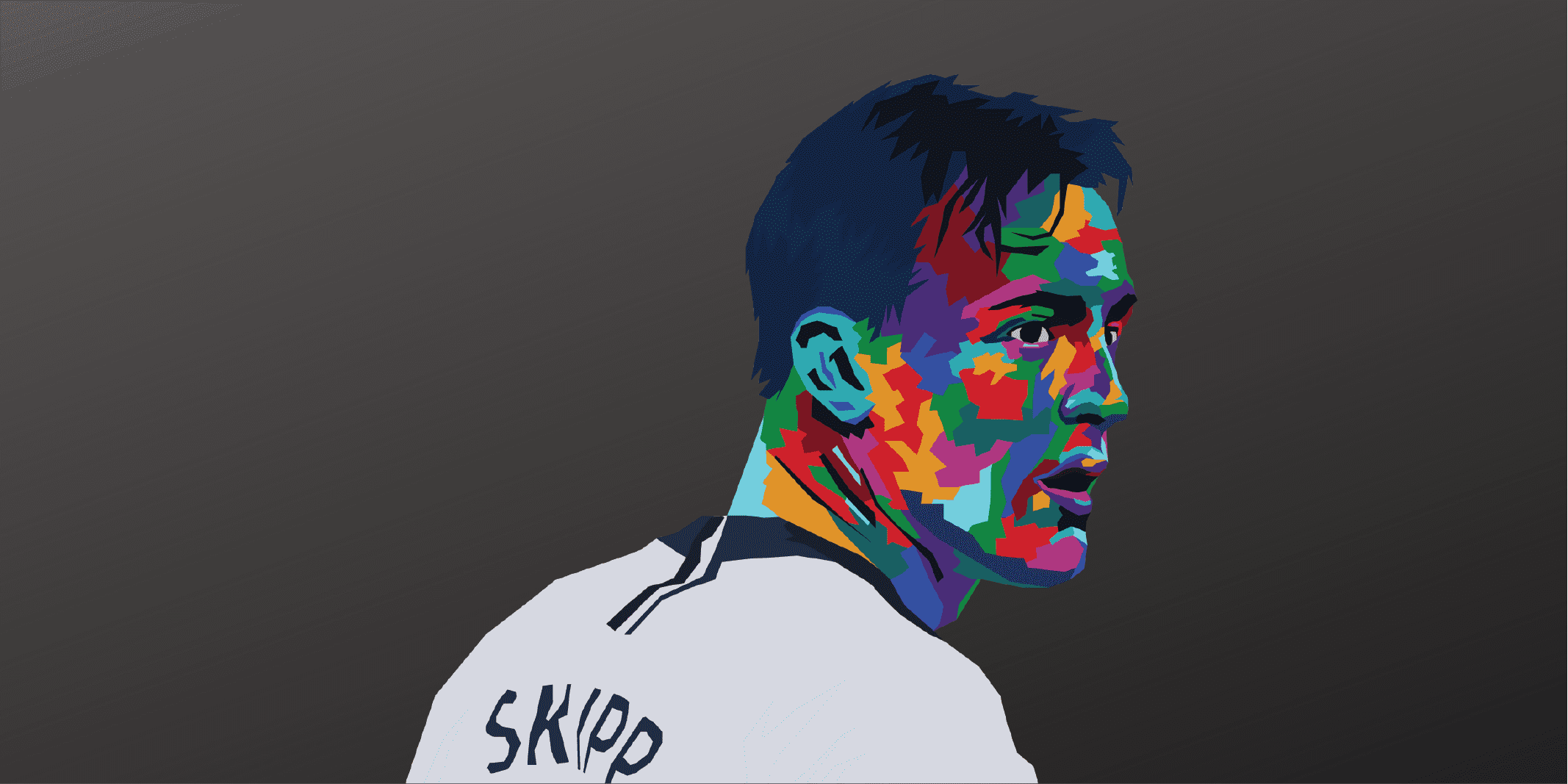




Comments